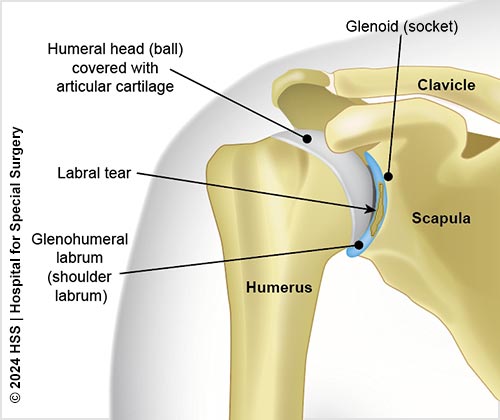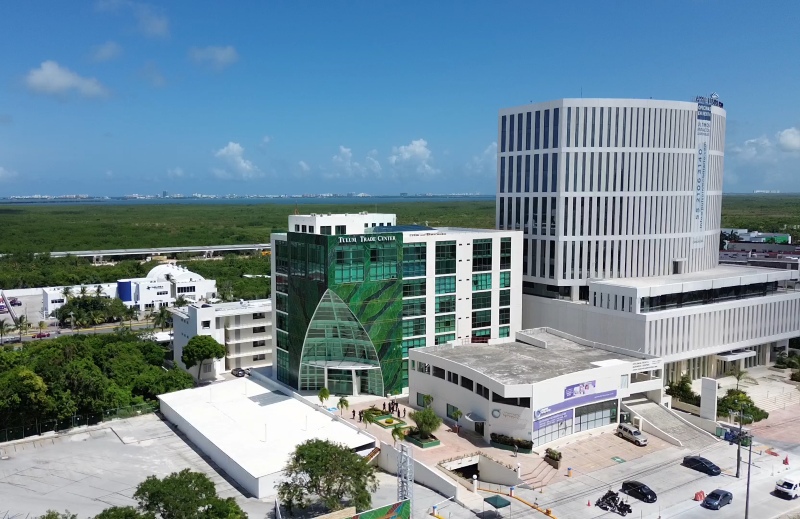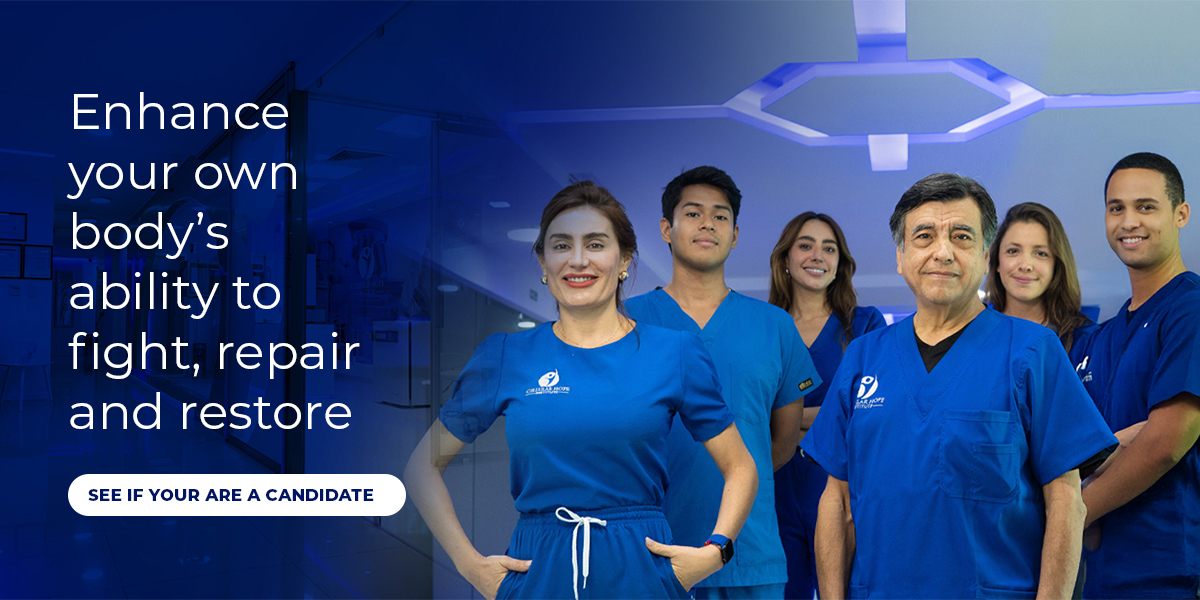Looking to get stem cell therapy for torn labrum? Discover the costs associated with this type of stem cell treatments in this article.
Torn labrum can be a painful condition – it affects the stability and function of the shoulder joint, often causing discomfort and limited range of motion. Doesn’t sound like fun, right?
And the worst part is, according to Science Direct, labral tear is associated with increased risk of osteoarthritis, potentially worsening your health over time.
If you are experiencing pain from a torn labrum, stem cell treatments for shoulders can be a safe and effective way to promote healing, reduce inflammation, and restore shoulder function without the need for invasive surgery.
By using your body’s natural regenerative abilities, stem cell therapy for torn labrum can support the repair of damaged cartilage and soft tissues, enhancing your joint stability and improving your shoulder mobility.
But what is the cost of stem cell therapy for torn labrum, and where is the best place to get this treatment? Continue reading this article as we discuss some of the most commonly asked questions about this procedure.

Image Source: HSS.edu
What Is The Cost of Stem Cell Therapy For Torn Labrum?
If you are looking to get stem cell therapy for torn labrum, you are probably wondering – how much should I expect to pay for this treatment? Well, the answer is not that simple – there are a few factors that play a role in determining the cost for stem cell therapy.
Location Of The Clinic
The location of your clinic of choice plays an important role in determining the cost of stem cell therapy for torn labrum.
For example, performing your procedure in México can be significantly cheaper than the US – in México, stem cell treatments range from $3,500 to $10,000, while similar treatments in the US can go as high as $20,000 depending on the complexity of the therapy.
In México, labor expenses and overhead costs tend to be lower, which makes it a more affordable but popular destination for medical tourism – all while still maintaining high-quality care at clinics such as Cellular Hope Institute.
Our location in Cancun is strategically designed to provide world-class stem cell therapy in a comfortable, accessible, and highly technological environment. You can enjoy the added benefit of recovering on the beautiful, relaxing coast – that’s what we call a win-win!

Clinic of Cellular Hope Institute in Cancun, México.
Type of Stem Cells
When discussing how much stem cell therapy for torn labrum costs, another key factor is the type of stem cells that will be used for the treatment.
If the procedure involves autologous stem cells (harvested from your own body), it generally tends to be more expensive. That’s because it involves an additional step of extraction, which requires specialized equipment and trained personnel.
However, allogeneic stem cells tend to be more affordable because there is no need for patient harvesting and processing. They are derived from carefully screened and tested donors, and processed in specialized labs – which makes them readily available.
Processing Of Stem Cells
When it comes to the cost of stem cell therapy for torn labrum, another aspect that contributes to the overall cost is the processing of stem cells that will be used for the procedure.
Once the stem cells have been harvested, they will pass through a process called “cell isolation” – which involves the use of specialized equipment and methods (like centrifugation or filtration) to isolate them from other components, such as blood cells or fat cells.
The stem cells will also have to be concentrated to ensure a potent dose for the therapy, as well as purified in order to remove any impurities and unwanted cell types. This will maximize the effectiveness of your stem cell therapy for torn labrum.
Physician Experience
If your stem cell treatment is performed by skilled physicians with years of experience, this can also impact the overall cost of your procedure. That’s because highly skilled practitioners may charge more for their services, although this is not always the case.
For example, Cellular Hope Institute offers world-class stem cell therapy for torn labrum performed by a team of highly skilled physicians at competitive prices.
Despite the expertise and advanced techniques used, we are committed to providing affordable treatment options without compromising quality or patient care. This balance ensures that patients receive top-tier care and optimal outcomes while maintaining cost-effectiveness in a supportive, state-of-the-art facility.
Severity of The Condition
The severity of a torn labrum can also impact the cost of stem cell therapy for torn labrum, as more advanced cases may require additional resources for the treatment.
For example, severe tears often need higher doses of stem cells, multiple injections, or supplementary treatments like PRP to enhance effectiveness, all of which increase expenses.
Complex conditions may also require longer imaging-guided procedures or follow-up sessions. Conversely, mild tears typically involve simpler, less intensive therapy, resulting in lower overall costs.
Post-Treatment Care
In some cases, post-treatment care can also add up to the costs of stem cell therapy for torn labrum. This can include follow-up appointment, physical therapy, as well as possible additional treatments to ensure optimal recovery of your shoulder.
Physical therapy, in particular, is essential for restoring strength and mobility, and its duration can vary depending on your condition. Some cases may also require imaging or supplementary injections to monitor and enhance healing.
These additional services may contribute to the total expense of therapy.
Is Stem Cell Therapy For Torn Labrum Covered by Insurance?
Unfortunately, in most cases, the cost of stem cell therapy for torn labrum is not covered by insurance. That’s because stem cell treatments are still considered experimental or investigational by insurance companies.
However, you can always check with your insurance provider in case they can cover certain aspects of the treatment, such as initial diagnostic tests, imaging (like MRI), or post-procedure physical therapy. However, they probably won’t cover the therapy itself.

What Are The Advantages of Stem Cell Treatments For Torn Labrum?
The benefits of stem cell therapy for torn labrum are endless, so if you’ve decided to opt for this type of treatment, you definitely won’t regret it! Let’s take a look at some of them:
- No Incisions – Since stem cell therapy is administered through injections, there is no need for surgical incisions, which minimizes recovery time.
- Natural Healing – As opposed to surgery, which is an invasive procedure, stem cell therapy for torn labrum stimulates your body’s natural repair mechanisms.
- Reduced Pain – Of course, the main goal of this treatment is to reduce pain and inflammation, which will only get better over time.
- Quick Recovery – While traditional procedures like surgery require significant downtime, the recovery with stem cell treatments is extremely fast.
- Lower Risk – Stem cell therapy for torn labrum also has a lower risk of complications as opposed to surgery, such as infections, scarring, etc.
- Improved Joint Stability – Stem cells can also enhance the stability and functionality of your shoulder joint by repairing damaged tissues.
- Delays or Prevents Surgery – In many cases, getting a stem cell treatment can delay the need for invasive surgeries, or prevent them altogether. Which is great!
- Long-Lasting Benefits – One of the biggest advantages of stem cell therapies is that they have long-lasting benefits – you will notice that pain and inflammation continue decreasing over time.
In addition, you will enjoy a completely customized treatment that is tailored to your specific condition and complexity. This will maximize your regenerative potential, and achieve optimal results as quickly as possible.
Are you ready to get your stem cell therapy with Cellular Hope Institute? Contact us now!
FAQ
How much does stem cell therapy for a torn labrum cost on average?
On average, stem cell therapy for a torn labrum costs between $5,000 and $20,000 in the United States, depending on factors like the type of stem cells used, the severity of the condition, and the clinic’s location.
International options, such as in Mexico, can lower costs to a range of $3,500 to $10,000.
How does the clinic’s location impact the price?
The clinic’s location plays a significant role in the price of stem cell therapy for a torn labrum. Clinics in urban or high-cost areas, such as major cities in the U.S., typically charge more due to higher overhead and operational expenses.
In contrast, clinics in countries like Mexico or smaller regions often offer more affordable options due to lower labor costs and regulatory requirements. Medical tourism destinations combine quality care with cost savings, making location a key factor in pricing.
Are there additional fees for imaging or post-treatment care?
Yes, additional fees for imaging and post-treatment care are common in stem cell therapy. Imaging techniques like ultrasound or MRI, used to guide injections and monitor progress, may incur extra costs if not included in the initial package.
Post-treatment care, such as follow-up visits, physical therapy, or supplementary injections like PRP, can also add to the total expense. These services are essential for ensuring accurate delivery and optimizing recovery outcomes.
Does the severity of the labral tear influence the overall cost?
Yes, the severity of the labral tear significantly influences the overall cost of stem cell therapy. More severe tears may require higher doses of stem cells, additional injections, or supplementary treatments like PRP, increasing the expense.
Complex cases often involve longer procedures, advanced imaging, and more follow-up care to ensure proper healing. Conversely, mild tears generally require less intensive treatment, leading to lower overall costs. Tailored treatment plans reflect these differences.
How many sessions of stem cell therapy are typically required?
The number of stem cell therapy sessions required for a torn labrum typically depends on the severity of the injury and the patient’s response to treatment. Most patients need only one session, as a concentrated dose of stem cells is often sufficient to stimulate healing.
However, more severe or chronic cases may require multiple sessions to achieve optimal results. Follow-up evaluations help determine if additional treatments are necessary, ensuring a personalized approach to recovery and joint health.

